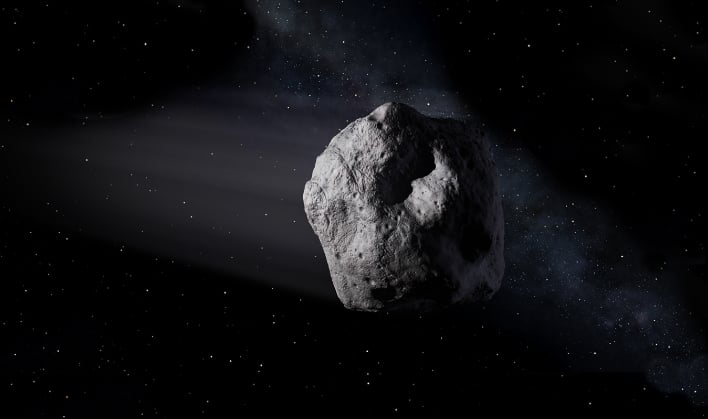NASA Tests Planetary Defense System As A Potentially Hazardous Asteroid Zooms Towards Earth

While there are not any known asteroid threats in the near future, astronomers around the world still stay on watch for any "new" potentially dangerous asteroids. Last year more than 100 of those astronomers participated in an exercise to test the readiness of the community as it pertains to detecting and tracking a "new" asteroid that could pose a threat to Earth. The test included removing a known, large, and potentially dangerous asteroid from the planetary defense-monitoring database in order to see if it could be properly detected anew.
Those involved were able to rediscover the asteroid, continually reassess it as it was tracked, and then rule out the possibility of an impact occurring in the near future. The exercise was coordinated by the International Asteroid Warning Network (IAWN) and NASA's Planetary Defense Coordination Office (PDCO). It validated the ability of those involved could act in a rapid manner from initial detection to follow-up characterization, and then assess any hazard that could be posed by a new near-Earth asteroid.
The focus of the exercise was an actual asteroid, called Apophis. This asteroid was at one time considered to pose a significant chance of impacting Earth in 2029 or later. However, since it was first detected in 2004, tracking measurements taken since then have led astronomers to believe the asteroid poses no impact whatsoever for 100 years or more. Observations of Apophis during its most recent close approach were used by the planetary defense community for the exercise.

In order to make the exercise appear more realistic, the Minor Planet Center (MPC) pretended that it was an unknown asteroid by preventing the newest observations from being associated with previous observations. This created an environment which made the asteroid appear to be a new possible threat.
"Even though we knew that, in reality, Apophis was not impacting Earth in 2029, starting from square one, with only a few days of astrometric data from survey telescopes, there were large uncertainties in the object's orbit that theoretically allowed an impact that year," remarked Davide Farnocchia, a navigation engineer at NASA's Jet Propulsion Laboratory in Southern California. The team was also able to rule out any possibility of Apophis impacting Earth in the next 100 years or more once again.
So, as you look up to the night sky and wonder if there are any asteroids out there that could come crashing into Earth at some point, rest assured that there is a community of astronomers and scientists watching out as well. A more in depth look into the exercise can be found in a paper submitted to The Planetary Science Journal.
Top Image Credit: NASA

